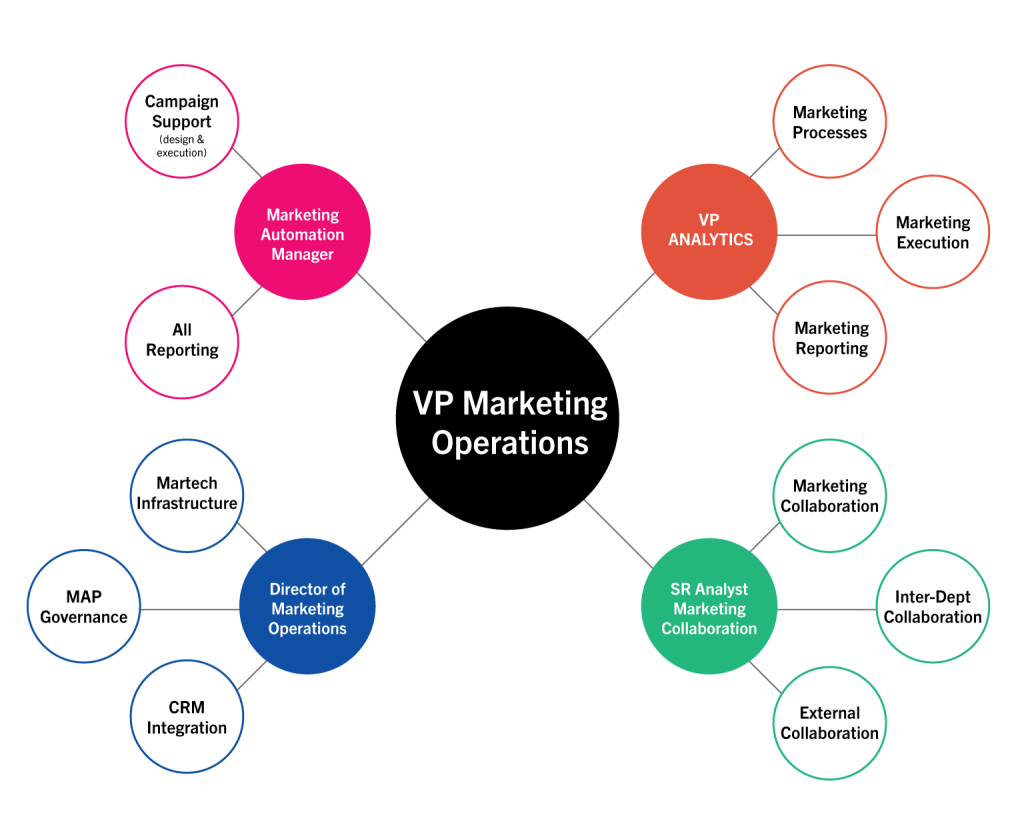Today’s modern SaaS marketer is more of a juggler than a singular, focused act.
With all of the different priorities, projects, and platforms, there’s quite a few balls up in the air.
Think of any successful modern day SaaS marketing campaign.
It’s more than just your traditional Google Ads campaign. More than a few follow up emails promoting recent product updates.
The modern day SaaS customer journey is long and nuanced. And the modern day SaaS marketing strategy needs to reflect that with a more holistic view of the customer lifecycle. With brand awareness campaigns, lead generation, content promotion and remarketing, the list can get long fast. The more complex these disparate campaigns grow, the more important high level management and integration become.
Enter the need for Marketing Ops.
Without strong Marketing Operations there is minimal visibility into campaign performance, and thus almost no way to make informed investment decisions.
– Sean Madden | Marketing Operations, Directive
Marketing Operations allows businesses to connect and improve unique marketing efforts to make them more efficient and more effective. The reason so many Marketing Ops strategies fail is because marketing operations is no longer just a technical discipline. Looking at MOPs professionals as blind integrators and button pushers leads to aimless execution.
In this post, we’ll be covering just what properly aligned Marketing Operations includes and what the next evolution of modern day SaaS Marketing Ops looks like. This way you’ll be able to keep an eye on that juggling act of yours while also knowing where they heck it is you’re heading.
What is Marketing Ops?
Historically, marketing operations has been a business function meant to oversee an organization’s marketing programs, planning, and strategic activities. But it’s time we all start evolving our marketing strategies to include a more customer-led approach. Helping more customers is the ultimate goal of any digital marketing plan, after all.
Marketing Ops – or MOPs – strategies ought to be tailored towards improving our marketing efforts’ ability to reach more customers, not blindly optimize systems. Thinking you can get by with random system optimizations is why so many businesses fail when they enter the SaaS space.
MOPs personnel go as unsung heroes with a “button pushers” rep because they’re too often aimed at “improving systems” without a properly aligned goal. Their responsibilities and value go far beyond just improving the connectivity between your SaaS SEO and PPC campaigns.

You can’t improve the efficiency of a system without knowing the right goal to optimize towards.
So what does Marketing Ops look like now?
At Directive, Marketing Operations is a revenue and marketing function designed around deep customer insights that optimizes systems, technology, and integrations towards an aligned goal that ties directly back to revenue.
The commonly misconstrued goal of marketing operations is efficiency. When what really matters is effectiveness. But don’t take my word for it – take the word of these SaaS marketing experts:
“One of the biggest mistakes MOPs professionals make today is letting technology drive strategy.”
– Darrell Alfonso | Global Marketing Operations, Amazon Web Services
“99% of marketing executives want to see their marketing operations improve”
– Sean Madden | Marketing Operations, Directive
“Mistakes with the [marketing-sales] handoff lead to lost time and money and could even jeopardize a sale. Because there are gray areas of ownership and contention, [it’s one of of the biggest] challenges that marketing operations faces”
– Tanya Chu | Global Reporting & Analytics, Splunk
Now, let’s get started looking at what an actual Marketing Ops professional handles on the day to day.
Marketing Ops Responsibilities/KPIs
So, how does Marketing Operations fit into modern-day SaaS businesses? Where do they sit in the org chart? And what do they have to worry about in terms of Jobs To Be Done?
We’ll start backwards and work our way back from there.
What exactly does a Marketing OPs professional do?
Consider the image below. Marketing OPs professionals are system optimization masterminds who can integrate unique campaigns and customer flows into streamlined systems.

In terms of Jobs To Be Done (JTBD), you can look at the list below for the basic roles and responsibilities of most marketing ops professionals. What do these unique digital marketing positions have to focus on?
- high level project planning
- process management and optimization
- MarTech investments and integrations
- reporting and data enrichment
- brand building and consistency
- customer-led revenue alignment
You may have noticed one of the bullets on that list is bolded. And here’s why. Truly successful Marketing Ops aren’t defined by their ability to improve systems, but their ability to improve the customer lifecycle and generate more revenue. Which might explain why these revenue focused Marketing Ops sit so poignantly at the center of most SaaS org charts.

Given their connection to so many different Marketing and Sales functions, the KPIs Marketing OPs personnel choose to chase often get blurred. This can be a huge problem. If you don’t know how to properly align your MOPs towards customer generation and actual revenue growth, then you’re really just burning your budget.
“There are two [primary issues in modern SaaS MOPs]: 1) leadership and other teams do not know/appreciate the value that effective marketing operations can bring to the organization and 2) MOPs practitioners can sometimes become too granular and narrow in the results they deliver, when they should always think big picture and strategy first.”
Darrell Alfonso,
Global Marketing Operations, Amazon Web Services
Why Marketing Ops Is Vital For SaaS
Now, if you’re still working on some more traditional, D2C campaigns, you might be wondering what the value of cross-campaign integration is.
Why invest in high-level cross-campaign integration?
Why Traditional MOPs No Longer Works
As we mentioned earlier, the reason so many Marketing Ops strategies fail today is because marketing professionals refuse to evolve beyond their technical discipline. The current status quo of MarTech obsession and technical masterminds has marketers focusing on execution instead of strategy. And as the famous quote goes:
“Strategy without execution is useless — Execution without strategy is aimless.”
We like to go one step further. One step deeper. As in: your Marketing Ops strategy needs to be deeper than just “making your marketing systems more efficient.”
It needs to go deeper. Much deeper. All the way down to the customer experience itself. Truly customer-led Marketing Operations is a function designed around deep customer insights, not tools and tech. Let’s dive a bit deeper ourselves to see what this lack of depth can lead to with traditional Marketing Ops.
Strategic Fault: Department Misalignment
Ask yourself this: what is the ultimate goal of traditional demand gen and marketing ops?
MQLs.
But, as mentioned above (and worth re-emphasizing again here): MQLs don’t consistently translate into sales and revenue.
And with the high costs associated with Marketing Ops, misaligning your optimization strategies towards a goal that can’t directly increase revenue will always lead to frustration.
What’s even worse than that is that you fail to do what you actually set out to do by improving your marketing systems – help more customers.
This is the critical misalignment of most marketing ops strategies today: focusing too much on improving the systems themselves instead of the experiences of those they’re trying to reach.
Strategic Fault: MarTech Bloat/Aimless Audits
You can watch our LTV:CAC video for a step by step walkthrough of how to use the tool.
Customer-Led Marketing Ops begins with the customer in mind rather than merely attracting leads. With clearly identified target accounts every MQL should become an SQL!
Sean Madden
Marketing Operations, Directive